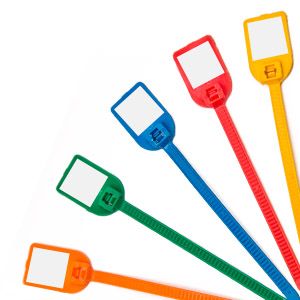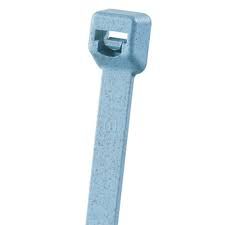Plumbing disasters often start small. A loose pipe, a dripping valve, or a misplaced hose can trigger leaks, water damage, and structural risks. While many tools are essential for plumbing work, few are as underestimated—and as useful—as the humble
cable tie.
These simple plastic fasteners can save time, prevent hazards, and add a layer of organisation to plumbing projects. In skilled hands, they help reduce the chance of costly mistakes.
What Are Cable Ties?
Cable ties, also known as zip ties, are nylon fasteners used to hold items together. They come in various lengths, tensile strengths, colours, and temperature ratings. Once looped and pulled tight, they stay locked in place unless cut.
Originally used for organising wires, cable ties have found their way into almost every trade. For plumbers, they serve both temporary and long-term purposes. Their versatility and reliability make them ideal for jobs where other fasteners might fail or slow things down.
Why Plumbers Use Cable Ties
Plumbers work in wet, tight, and unpredictable spaces. Cable ties offer practical advantages in such conditions:
-
Quick fastening: No tools are needed—tighten by hand in seconds.
-
Compact and flexible: Ideal for tight corners or complex installations.
-
Strong and durable: Industrial-grade ties can withstand vibration, movement, and moisture.
-
Cost-effective: A small investment that prevents large-scale problems.
-
Organizational aid: Helps separate, label, or bundle parts on-site.
Common Plumbing Applications of Cable Ties

1. Securing Pipes and Tubing
Loose pipes rattle, shift, and wear out faster. When left unsecured, they can crack or burst due to pressure or thermal expansion. Cable ties help hold them in place.
-
In residential settings: Attach copper or PEX piping to joists or beams without damaging them.
-
In HVAC plumbing: Bundle refrigerant lines or drain hoses to avoid sagging.
-
On temporary jobs: Keep pipes from moving during tests or installation phases.
Cable ties provide fast, adjustable restraints where brackets or clamps may be excessive or slow.
2. Organising Hoses and Drains
During sink, toilet, or appliance installations, plumbing hoses often need to be grouped or guided through cabinetry. Cable ties prevent tangling or dislodgment.
-
Bundling supply lines: This keeps hot and cold water lines separated.
-
Aligning drain pipes: Prevents accidental misalignment during assembly.
-
Securing flexible hoses: Stops kinks or backflow from sudden movements.
Proper hose management reduces stress on fittings, which extends the lifespan of connections and prevents leaks.
3. Labeling and Identification
In commercial or multi-unit properties, plumbers often need to identify which pipe or valve serves which area. Cable ties with tags or colour codes simplify this process.
-
Colour-coded ties: Use red for hot water, blue for cold, and green for greywater.
-
Write-on tags: Mark dates, floor numbers, or maintenance notes directly on the tag.
-
QR-code labels: Attach scannable tags for digital inventory or inspection logs.
Clear labeling reduces the chance of error during repairs or inspections.
4. Holding Insulation in Place
Insulation sleeves or foam tubes protect pipes from freezing or condensation. But they don’t always stay in place.
Cable ties help secure insulation material:
-
Along copper and PVC pipes: Keeps lagging in place through temperature swings.
-
Behind walls and under floors: Holds insulation where adhesives can’t be used.
-
On outdoor lines: Ensures insulation doesn't peel off due to wind or moisture.
This keeps pipes protected, reduces energy loss, and prevents freezing bursts.
5. Drain Snake and Tool Management
Plumbers rely on many small, specialised tools that get lost or damaged easily. Cable ties help organise them on-site and during transport.
-
Bundle rods, drain snakes, or augers for storage.
-
Secure buckets, toolboxes, or hoses during vehicle transport.
-
Attach hand tools to belts or hangers for quick access.
Organized tools save time and reduce frustration.
Learn more: How to Secure Plumbing Lines with Cable Ties.
How Cable Ties Help Prevent Plumbing Disasters
Cable ties may seem like minor accessories, but their preventative impact is huge. Here’s how they help avoid major headaches:
1. Prevents Water Leaks and Floods
Unsecured pipes and hoses can shift due to vibration or temperature changes. Over time, this weakens joints and causes small leaks.
By keeping components fixed in place, cable ties:
- Reduces wear at joints
- Prevent movement that can cause leaks
- Help maintain proper slopes for drains
A single cable tie can prevent gallons of water damage.
2. Avoids Pipe Freezing and Bursting
Insulated pipes are more energy-efficient and less prone to freezing. But insulation that slips off exposes pipes to the cold.
Cable ties keep insulation in place, ensuring:
- Constant temperature regulation
- Reduced condensation
- Longer pipe lifespan in exposed areas
Frozen pipes don’t just stop flow—they burst. Cable ties reduce that risk.
3. Reduces Risk of Backflow
Flexible drain or supply hoses can sag or twist over time. This can lead to poor drainage or even backflow.
Cable ties help maintain elevation and direction. This:
- Keeps traps effective
- Prevents foul odors from re-entering homes
- Stops wastewater from contaminating fresh lines
Small adjustments in hose positioning prevent hygiene disasters.
4. Improves Inspection and Maintenance
Labelled or organised plumbing systems are easier to inspect and repair. This avoids costly trial-and-error diagnostics.
- Technicians quickly locate the right pipe or valve
- Reduces downtime during service
- Helps meet safety and regulatory standards
Cable ties support smarter plumbing management.
5. Prevents Tool-Related Damage
Loose tools can damage tiles, fixtures, or delicate components. By keeping gear bundled and hung properly, plumbers reduce the chance of collateral damage.
A tied-up tool is a safe tool.
Choosing the Right Cable Tie for Plumbing Jobs

Not all cable ties are created equal. Plumbers should select ones suited to the environment:
Material
Length and Strength
Features
The right tie increases effectiveness and reduces replacement frequency.
Best Practices for Using Cable Ties in Plumbing
To get the most out of cable ties:
-
Avoid over-tightening: Too much pressure can damage soft tubing
-
Trim excess length: Prevents cuts and keeps installations neat
-
Use a cable tie gun: This ensures consistent tension and fast cutting
-
Replace old ties: UV or moisture can degrade plastic over time
-
Pair with other fasteners: Use in combination with clips or brackets for stronger results
Smart usage makes a long-term difference.
Learn more: How Cable Ties Facilitate Plumbing Management and Organization.
Final Thoughts
Cable ties may not be the flashiest tool in a plumber’s kit, but their impact is undeniable. They secure, support, and organise key components in any installation. More importantly, they stop plumbing disasters before they start.
From holding pipes in place to ensuring insulation stays secure, cable ties do more than just “tie things together.” They prevent leaks, protect property, and bring order to complex plumbing systems.
For plumbers who value efficiency, durability, and disaster prevention, cable ties are more than a convenience—they're essential.
For more insights and tips on cable ties and other related products, explore
cabletiesunlimited.com, get a
quick and free quote, and follow us on our social media communities on
Facebook and
Instagram!

 Not all cable ties are created equal. Plumbers should select ones suited to the environment:
Not all cable ties are created equal. Plumbers should select ones suited to the environment:
